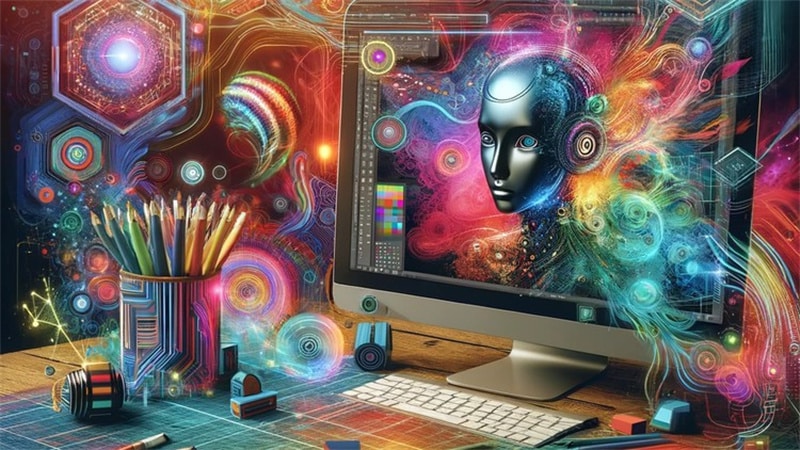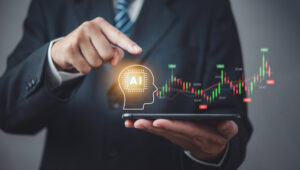In today’s rapidly evolving digital landscape, AI-powered design apps are revolutionizing the way creative professionals approach their work. From graphic designers to architects, these advanced tools are reshaping traditional methods, allowing for more innovation and efficiency. In this article, we will delve into the world of AI-powered design apps, exploring their capabilities, benefits, and the future they hold for digital creators.

The Rise of AI in Design
The integration of Artificial Intelligence (AI) in design is not a new concept. However, recent advancements have significantly enhanced the functionality of design applications. AI algorithms can now analyze vast amounts of data to predict trends, automate routine tasks, and even assist in creative decision-making. This has opened up new horizons for designers, enabling them to focus more on conceptualization and less on technical execution.
How AI Enhances Creativity
One of the most significant advantages of AI-powered design apps is their ability to enhance creativity. By automating repetitive tasks, these tools free up designers to explore more innovative ideas. AI can suggest color schemes, layouts, and even generate initial drafts, allowing designers to quickly iterate and refine their concepts.
Key Features of AI-Powered Design Apps
Automation and Efficiency
Automation is at the core of AI-powered design apps. Tasks that once took hours can now be completed in minutes. This includes things like resizing images, applying filters, or generating design templates. The efficiency gained through automation allows for faster project turnaround times, which is a significant advantage in industries where time is of the essence.
Data-Driven Insights
AI’s ability to analyze data provides designers with valuable insights. By examining user preferences and market trends, AI-powered tools can make recommendations that align with current demands. This data-driven approach ensures that designs are not only aesthetically pleasing but also relevant and impactful.
Impact on Various Design Fields
Graphic Design
In graphic design, AI tools are being used to streamline workflow and enhance creativity. Designers can leverage AI to generate ideas, automate mundane tasks, and even receive feedback on their work. This has led to a more dynamic and efficient design process.
Architectural Visualization
For architects, AI-powered apps offer the ability to create detailed visualizations and simulations. These tools can predict how designs will perform in real-world conditions, allowing architects to make informed decisions. The role of AI in architectural visualization is becoming increasingly important as it enhances both creativity and accuracy.
3D Modeling
In the realm of 3D modeling, AI-powered apps are simplifying complex processes. Designers can quickly create and modify models with the help of AI algorithms, resulting in more intricate and precise designs. The integration of AI in 3D modeling is transforming how designers approach projects.
Challenges and Considerations
Data Privacy Concerns
With the increasing use of AI, data privacy has become a critical concern. Designers must ensure that the data used by AI tools is protected and used ethically. This includes being transparent about data collection practices and prioritizing user consent.
Balancing Creativity and Automation
While AI enhances efficiency, there is a risk of over-reliance on automation. Designers must strike a balance between leveraging AI’s capabilities and maintaining their creative intuition. The goal is to use AI as a tool that complements human creativity, not one that replaces it.
The Future of AI-Powered Design
The future of AI-powered design apps is promising. As technology continues to evolve, these tools will become even more sophisticated, offering new possibilities for designers. The integration of AI will lead to more personalized and interactive design experiences, ultimately transforming the creative landscape.
Emerging Trends
Several emerging trends are shaping the future of AI in design. These include the use of neural networks to mimic human creativity, the development of AI-driven virtual reality experiences, and the growing importance of AI in predicting design trends. These advancements will redefine how designers approach their work.
Conclusion
AI-powered design apps are transforming the creative industry by enhancing efficiency, enabling data-driven decision-making, and fostering innovation. As these tools continue to evolve, they will play an integral role in shaping the future of design. By embracing AI, digital creators can unlock new opportunities and push the boundaries of what’s possible.

FAQs
What are AI-powered design apps?
AI-powered design apps are digital tools that leverage artificial intelligence to enhance and streamline the design process. They offer features such as automation, data analysis, and creative suggestions.
How do AI-powered design apps enhance creativity?
These apps automate repetitive tasks and provide data-driven insights, allowing designers to focus on creative aspects and explore innovative ideas.
What are the challenges of using AI in design?
Challenges include ensuring data privacy, balancing automation with human creativity, and addressing ethical considerations in AI usage.
For more insights into AI and design, visit Fotor’s AI Design Tools and Piktochart’s AI Graphic Design Tools.







